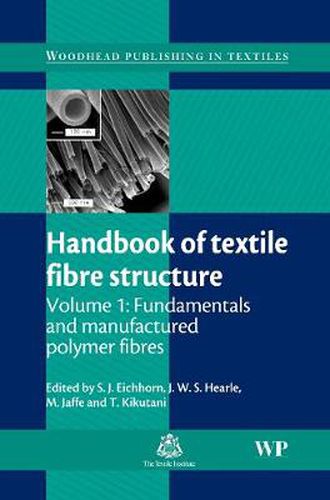Readings Newsletter
Become a Readings Member to make your shopping experience even easier.
Sign in or sign up for free!
You’re not far away from qualifying for FREE standard shipping within Australia
You’ve qualified for FREE standard shipping within Australia
The cart is loading…






Due to their complexity and diversity, understanding the structure of textile fibres is of key importance. This authoritative two-volume collection provides a comprehensive review of the structure of an extensive range of textile fibres.
Volume 1 begins with an introductory set of chapters on fibre structure and methods to characterise fibres. The second part of the book covers the structure of manufactured polymer fibres such as polyester, polyamides, polyolefin, elastomeric and aramid fibres as well as high-modulus, high-tenacity polymer fibres. Chapters discuss fibre formation during processing and how this affects fibre structure and mechanical properties. A companion volume reviews natural, regenerated, inorganic and specialist fibres.
Edited by leading authorities on the subject and with a team of international authors, the two volumes of the Handbook of textile fibre structure is an essential reference for textile technologists, fibre scientists, textile engineers and those in academia.
$9.00 standard shipping within Australia
FREE standard shipping within Australia for orders over $100.00
Express & International shipping calculated at checkout
Due to their complexity and diversity, understanding the structure of textile fibres is of key importance. This authoritative two-volume collection provides a comprehensive review of the structure of an extensive range of textile fibres.
Volume 1 begins with an introductory set of chapters on fibre structure and methods to characterise fibres. The second part of the book covers the structure of manufactured polymer fibres such as polyester, polyamides, polyolefin, elastomeric and aramid fibres as well as high-modulus, high-tenacity polymer fibres. Chapters discuss fibre formation during processing and how this affects fibre structure and mechanical properties. A companion volume reviews natural, regenerated, inorganic and specialist fibres.
Edited by leading authorities on the subject and with a team of international authors, the two volumes of the Handbook of textile fibre structure is an essential reference for textile technologists, fibre scientists, textile engineers and those in academia.